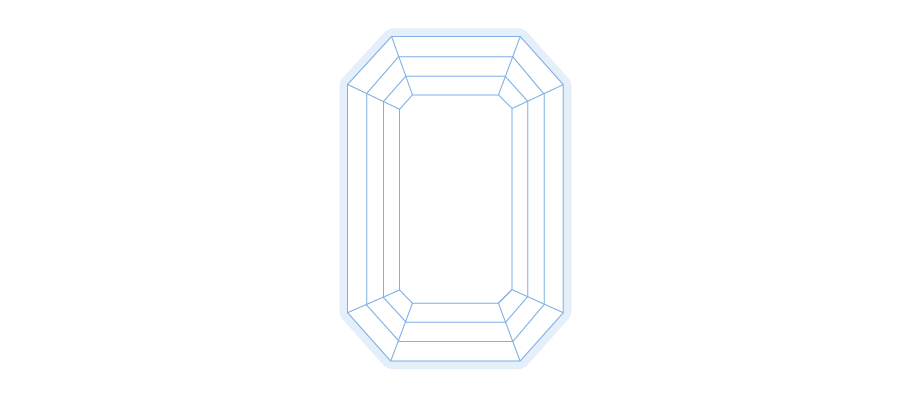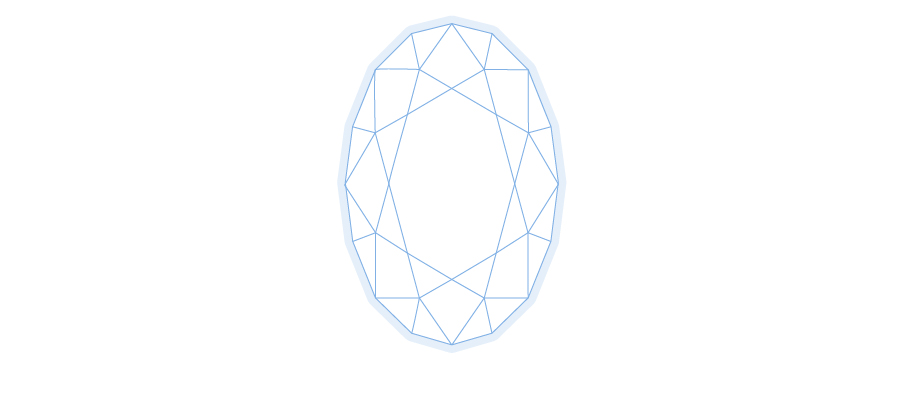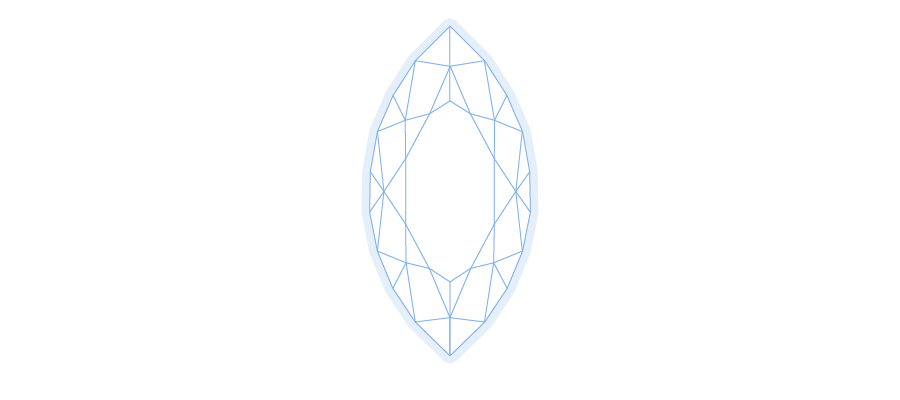Diamond Shapes
Talking about diamonds, it is important to understand the education about diamond shapes. Speaking of shapes, many will immediately think of the round classic shaped diamond. Unquestionably so, the round diamond brilliant cut is considered the most popular shape but if you’re looking for something different, there are a handful of other shapes available.
The shape of a diamond refers to its physical form and outlook and each diamond shape is very peculiar, possessing unique and distinct characteristics. Other diamond shapes include princess diamond, emerald diamonds, oval diamonds, pear diamonds, radiant diamond, marquise diamonds, heart diamond, trilliant diamond, asscher diamonds and there is also the natural fancy coloured diamonds.
A diamond packaging may affect how the stone appears when viewed from above. Diamond shapes which are cut at lower depths will result in larger lengths and widths. Shapes like oval or marquise usually have an elongated length, and it results in the illusion of a larger size per carat weight.
Round Diamond
The traditional standard for all diamond shapes. 3 out of every 4 diamond sold today are round diamond. Its 58-facet cut, divided among its crown (top), girdle (widest part) and pavilion (base), is calibrated through a precise formula to achieve the maximum in fire and brilliance.
Princess Diamond
This is a square rectangular shape with many facets. This is a relatively new cut and often finds its way into solitaire engagement rings. It is attractive with longer fingers. This cut requires more weight to be directed toward the diamond’s depth in order to maximize brilliance.
Emerald Diamond
This shape is known as a step cut because its concentric broad, flat planes resemble stair steps. A rectangular shape with cut corners. Inclusions and inferior color can be more pronounced in this particular cut. So clarity and color should be looked at carefully and time taken when a choice is made.
Asscher Diamond
The Asscher cut was first created in 1902 by a renowned diamond cutter, Joseph Asscher. Several years later Joseph Asscher was chosen by King Edward VII to cut the famed Cullinan diamond for the English crown jewels. Asscher-cut diamonds are usually octagonal in shape or a square with beveled corners.
Radiant Diamond
This is a square or rectangular shape. The elegance of the emerald and the brilliance of the round shape marks this cut. 70 facets maximize the effect of its color refraction. Depth percentages of 70% to 78% are not uncommon. It requires this depth because of its cut and 70 facets.
Pear Diamond
This cut combines the best between the oval and marquise shapes. It is the hybrid shape that looks like a sparkling teardrop. It beautifully compliments the average size hand and fingers. It is gorgeous for pendants and earings. Modified brilliants whose facets that radiate…
Oval Diamond
This is a square or rectangular shape. The elegance of the emerald and the brilliance of the round shape marks this cut. 70 facets maximize the effect of its color refraction. Depth percentages of 70% to 78% are not uncommon. It requires this depth because of its cut and 70 facets.
Marquise Diamond
This shape is elongated with pointed ends. The smile of the Marquise de Pompadour inspired this shape which was then commissioned by the Sun King, France’s Louis XIV, who wanted a diamond to match it. It is beautiful as a solitaire or when matched with smaller complimentry diamonds.
Heart Diamond
A pear shaped diamond with a cleft on the top. The extraordinary skill of the cutter determines the beauty of this cut. Look for a stone with an even shape and a well-defined outline. Modified brilliants whose facets that radiate from the center of the stone towards the girdles edge.
Trilliant Diamond
This is the spectacular wedge shape. This was first designed in Amsterdam. This design can vary depending on a particular diamond’s natural characteristics and the cutter’s personal TESTIMONIALS. The shape may look like a traditional triangle with pointed corners, but more rounded shapes can be found.
Natural Fancy Colored Diamond
Fancy-colored diamonds are a natural, rare and truly exotic gem of the Earth. Colors range in intensity from faint to vivid in yellow, red, pink, blue and green. The more saturated the color, the higher the value. In fact, a diamond sparkling with intense color is so rare that it can be valued higher than a colorless diamond.
Diamond Packaging
Every Diamond World diamond can be sealed in a plastic holder together with a microfilm of the certificate. Not only does the sealing keep the diamond safe from damage, grease and dirt, it is also a guarantee that a given certificate and the accompanying stone actually belong together.



































